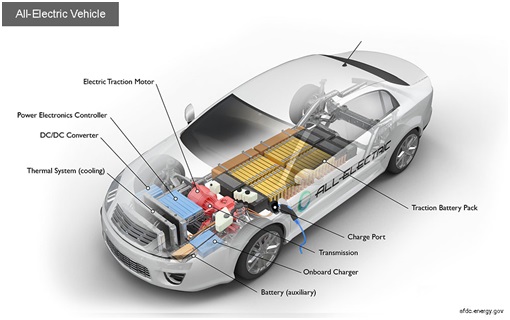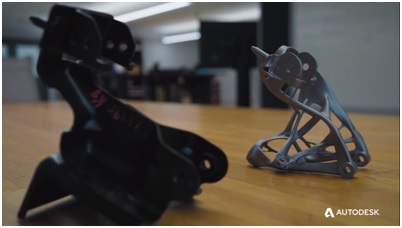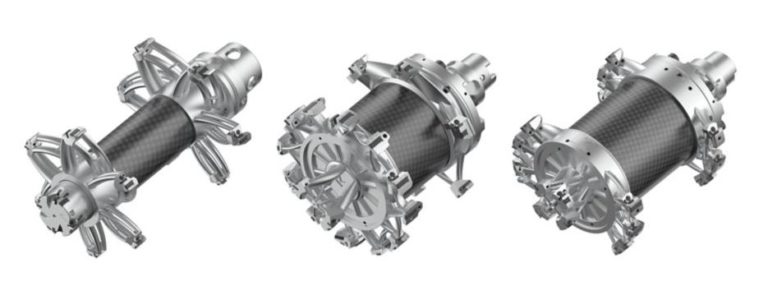3D Printing for Electric Vehicles
In a big move towards sustainability and carbon emission reduction, all big automobile companies and startups are focusing on producing electric vehicle variants and many governments have already set targets for production of electric vehicles and are rolling out various incentives to increase the share of electric vehicles on road. Design, development and manufacturing electric vehicles pose several challenges for many automakers and EV startups mainly due to the fact that there are several aspects of the electric vehicle that need to be addressed from the very scratch. Some of the manufacturing infrastructure that exists for manufacturing conventional automobiles becomes partially obsolete and requires modifications. As electric vehicles use electric motors and batteries for mobility, the engine and gearbox have to be replaced according to the electric vehicle design. We will look at 4 stages of electric vehicles and then elaborate on how 3D printing can aid in solving the challenges.

Design Stage
1. LightWeight Body Parts
Unlike the conventional ICE automobiles, electric vehicles entirely rely on batteries for mobility. Range (maximum distance that can be traveled once the battery is charged full) of the vehicle directly depends on the weight of the vehicle. For getting the maximum possible range for a given energy store, the weight should be as minimum as possible. This poses an additional challenge as retaining the strength of the part is also the key. For example, just reducing the part thickness to reduce weight also reduces the strength. Hence the geometry and topology has to be optimized against the loads acting on the component. This means the part has to undergo design and validation cycles. 3D Printing can help in a lot of ways to test and optimize the parts. After the part is optimized for weight, it can directly be printed with Metal 3D printers. Also, binder jetting 3D printing method has proven to produce metal parts that are 50% lighter than conventional methods.

General Motors used Autodesk Generative Design tool to reduce rear seat bracket weight by 40% and increase strength by 20%.
2. Chassis Configuration
Electric vehicles do not use an engine to drive and instead use electric motors. Hence the transmission and battery pack has to be placed and optimized to accommodate in as much smaller space as possible to make the vehicle light weight. So the chassis configurations have to be decided by using small-scale prototypes. 3D printing techniques like FDM can be used to quickly print scale models and assess the possibilities.
3. Fire Safe and Electricity Safe Enclosures
Batteries need to be protected against heat and fire, and as batteries themselves generate heat during discharge cycle, the enclosure has to dissipate that heat properly. So enclosures that are well ventilated with vent holes need to be manufactured. Such complex designs can easily be made with 3D Printing. Flame resistant and flame retardant materials like ULTEM 9085 are available for 3D printing.
Production Stage
1. Tooling for Metal parts
Parts like the steering knuckles, suspension mounting brackets, electric motor housings are typically produced with metal casting/forging/machining process. They are later CNC machined with specialized tools for surface finish and drilling fastening holes. Specialized cutting tools are required to reduce the number of tool passes and operations needed to get the geometry. For example, center drilling and chamfering can be combined with a special tool that does both at the same time. Such special tool bases can be produced with metal 3D printing and then cutting tool inserts made of carbide or cubic boron nitride can be fixed onto them.

Metal 3D Printed Cutting tool produced by Kennametal for machining electric vehicle motor housing.
2. Tooling for Sheet Metal Parts
Mass production of sheet metal parts would require stamping die tools. Conventionally the shape of the stamping dies is machined on 5-axis machining centers to make metal dies that last several thousand cycles. But for experimental purposes and form validation, FDM 3D printed tools made of ULTEM 9085 can be used that have proven to withstand pressures up to 70 MPa and can last 300 pressing cycles.
3. Tooling for Die Casting
Metal parts that are produced with pressure die casting would need metal dies that have complex geometries that have cooling channels. Such intricate geometries are achieved with inserts. Recently companies are exploring ways to 3D print the dies to achieve conformal cooling channels that reduce the cooling cycle times.
4. Tooling for Plastic Parts
Several interior parts of automobiles are made of plastic such as dashboards, instrument panel covers, brake handles etc. that are injection molded. Design, development and machining of complex injection mold tools takes several months of time and also involves costs. So, companies are exploring ways to make 3D printed injection molds that require minimum machining. This also saves a lot of design and development cost.
5. Jigs and Fixtures
Assembling various components together require special work holding aids that make the process smoother and reduce assembly time. Jigs and fixtures ensure worker safety and minimize hand movements to increase accuracy. 3D printing is a great cost effective way to make jigs and fixtures. And not only the manual handling aspect, but several robots that handle the parts in the factory would also need grippers that do a specific set of jobs. If a new vehicle model is being developed, all subsequent production line handling needs modifications. It is possible to 3D print the robotic grippers that saves time and costs. There are some ESD materials available for 3D printing that prevent buildup of static electricity on its surface, thus preventing damage of electronic components during assembly.
Aftermarket Stage
The OEM supplier industry often survives based on orders received from other automobile companies. It is possible that at a certain stage the production of a specific part is discontinued. To ensure seamless aftermarket services, companies are planning to change the ecosystem by investing in 3D printing companies that can produce spare parts for them. Although 3D printing is a slow process that cannot meet the mass production volumes, companies can benefit from the flexibility, lower costs and faster delivery times offered by 3D printing methods in the years to come. With digital printing and smart inventory models, the cost of investing in 3d printer machines saves inventory and stock keeping costs.
Direct 3D Printed Parts
While it is true that 3D printing is being used to aid in the processes of design, development and manufacturing of automobiles which also includes electric vehicles, directly 3D printing parts that go into the vehicle are not yet capable to meet full scale production demands and hence it remains feasible only to limited scale production runs. But in the beginning stage where market adoption and customer acquisition is the key, additive manufacturing and 3D printing are great ways to roll out models onto the road. Although the exact break even line between mass production versus additively producing parts is not yet clear, global auto giants like BMW and Volkswagen have proved that additive manufacturing can be used for producing up to 1,00,000 parts per year which is still a decent number given the current numbers of EV adoption in India. 3D printer companies like Stratasys, 3D Systems, EOS, and HP etc. are directly working to develop the technologies even further to increase build volumes and speed to try and meet the demands of mass production and to directly contribute to making 3D printing a mainstream manufacturing method.